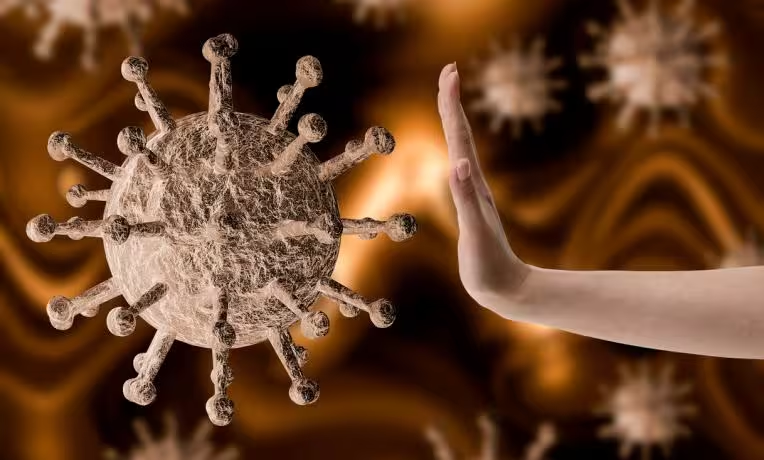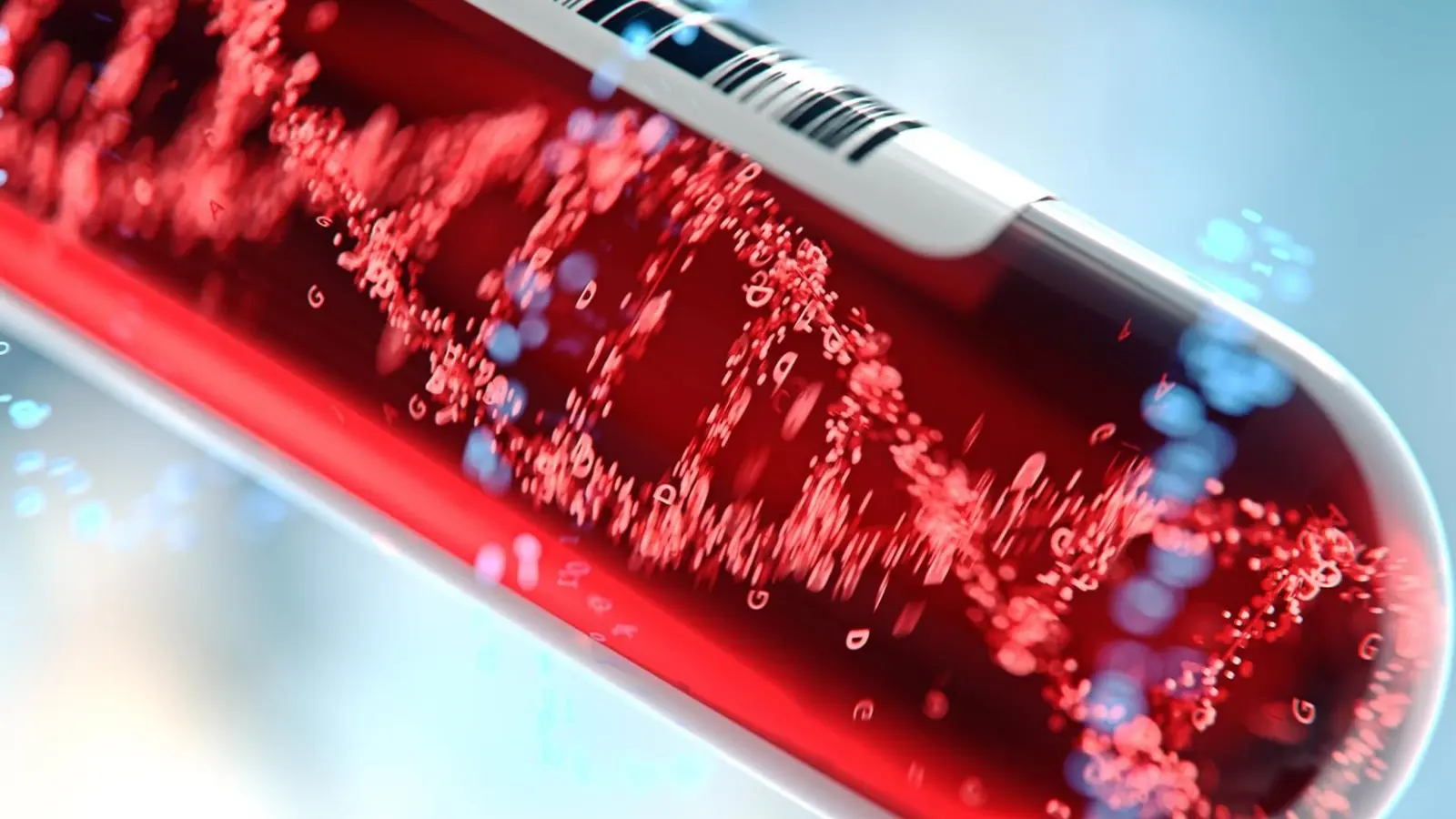6 Minutes
Introduction: A measurable signal for long COVID?
Researchers from the Translational Genomics Research Institute (TGen) at City of Hope and the Lundquist Institute for Biomedical Innovation at Harbor-UCLA report detecting fragments of SARS-CoV-2 proteins inside extracellular vesicles (EVs) in the blood of people with long COVID. These 'ghost' peptides — molecular remnants of viral proteins — could represent the first circulating biomarker for post-acute sequelae of SARS-CoV-2 infection (PASC), commonly known as long COVID. If independently validated, the finding would mark a major advance in diagnosing and studying a condition currently defined mostly by patient-reported symptoms.
Discovery and experimental approach
What the team looked for
The investigators analyzed 56 serum samples from 14 participants enrolled in a 12-week aerobic exercise clinical trial. Using high-sensitivity mass spectrometry and targeted proteomics, they isolated extracellular vesicles — nano‑scale lipid packages that cells release to transport proteins, RNA, and metabolites — and screened them for SARS-CoV-2–related peptides.
Key molecular finding
Across the samples, researchers identified 65 distinct peptide fragments derived from the virus's pp1ab polyprotein, an RNA replicase essential to SARS‑CoV‑2 replication. The pp1ab sequence is virus-specific and not found in healthy human cells, making these peptides plausible viral signatures. The peptides were present in EVs from all study participants at some time point, but not in every blood draw, and were absent from pre-pandemic control EV samples.
Scientific context: EVs, proteomics and viral reservoirs
Why extracellular vesicles matter
Extracellular vesicles are emerging as important mediators of intercellular communication and as carriers of disease biomarkers. Because EVs can cross tissue barriers and transport molecular cargo long distances, they provide a candidate mechanism for how viral material might move from localized reservoirs into peripheral blood without conventional viral particles being detected.

How this fits with the viral persistence hypothesis
Accumulating evidence suggests SARS‑CoV‑2 RNA and proteins can linger in tissues for months after acute infection. Some investigators propose that residual viral reservoirs — in gut, nervous tissue, or lymphoid compartments, for example — could intermittently shed viral components that drive immune activation and chronic symptoms. Detecting pp1ab-derived peptides in circulating EVs supports this possibility, though it stops short of proving active viral replication.
Interpretation, limitations and next steps
The signal the team measured was subtle and intermittently present. As Patrick Pirrotte, Ph.D., co-senior author, notes, 'There's still a lot to unpack that we don't know at this point.' Key unanswered questions include whether the peptides reflect ongoing low-level replication, episodic shedding from a tissue reservoir, or simply the cellular process of degrading and exporting protein fragments — 'molecular trash' — after the original infection.
Other methodological and interpretive limits remain: the study did not include matched controls of people who had recovered from COVID-19 without long-term symptoms, and the peptide profile did not contain other large structural or nonstructural proteins typically associated with active replication. The researchers also cannot yet determine whether external factors — such as exercise or immune activation — affect detection timing. William Stringer, M.D., senior author, summarized the clinical implication: 'I give patients a presumptive diagnosis based on symptom persistence, but I don’t have any blood tests or biomarkers to confirm this diagnosis.' Validating a reproducible blood biomarker would change that diagnostic landscape.
Implications for diagnostics and therapeutics
If replicated in larger cohorts with controls, EV-associated viral peptides could become an objective lab test to support long COVID diagnosis, enabling stratified research and potentially guiding targeted therapies. Detectable viral material might also focus therapeutic strategies on eliminating reservoirs or modulating EV-mediated pathways. Proteomics and mass spectrometry will likely be central technologies in this effort, as they can sensitively detect low-abundance peptides that elude routine clinical assays.
Expert Insight
Dr. Elena Moreno, a fictional infectious-disease scientist and science communicator with experience in viral persistence research, comments: 'This study is a compelling proof of concept. Finding virus-specific peptides in EVs provides a plausible route for tissue-derived signals to appear in blood. However, the clinical utility will hinge on reproducibility and specificity — can we distinguish long COVID from normal post-infection protein clearance? Large, controlled studies with longitudinal sampling are the next necessary step.' Dr. Moreno adds that integrating proteomic data with tissue biopsies, immune profiling, and imaging will be essential to map the biology behind these signals.
Quotes from the research team
Asghar Abbasi, Ph.D., first author, emphasized the virus-specific nature of the pp1ab peptides: 'This protein is unique to SARS-CoV-2 and does not exist in healthy human cells.' Dr. Abbasi also highlighted the rationale for studying EVs: 'We thought that maybe if the virus is circulating or moving in the body, we should try to see if EVs are carrying those viral fragments.'
Conclusion
The detection of SARS‑CoV‑2–derived peptides inside circulating extracellular vesicles offers a promising lead toward a measurable biomarker for long COVID. While the findings suggest persistent viral material can be tracked via EVs, they do not yet demonstrate active replication or establish causation for chronic symptoms. Future work must validate these peptides in larger, well-controlled cohorts, define their tissue origins and temporal dynamics, and determine whether they predict clinical outcomes or responses to therapy. If confirmed, EV-associated viral peptides could transform diagnostics, deepen understanding of viral reservoirs, and open new pathways for treating the long-term consequences of COVID-19.
Reference: Abbasi A., Sharma R., Hansen N., Pirrotte P., Stringer W. W., 'Possible long COVID biomarker: identification of SARS‑CoV‑2 related protein(s) in Serum Extracellular Vesicles', Infection, 21 July 2025.
Source: scitechdaily


Leave a Comment